slide presentation
Slide text: The presentation was prepared by a 9th grade student of the Lyceum of Otradnoye Smirnova Roxana
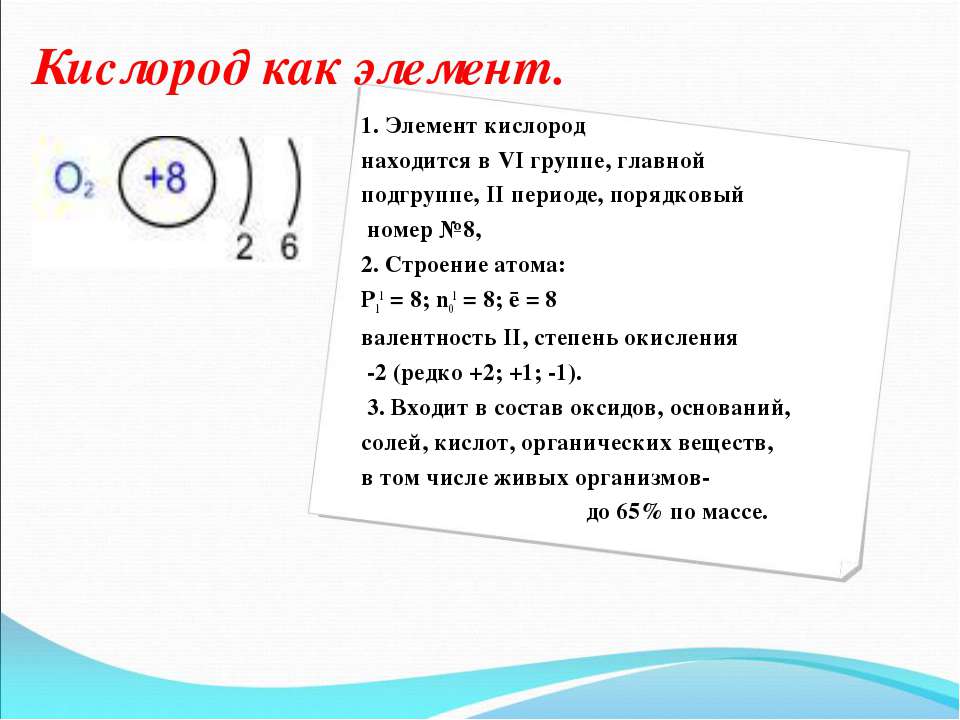
Slide text: Oxygen as an element. 1. The element oxygen is in group VI, main subgroup, period II, serial number No. 8, 2. Atomic structure: P11 = 8; n01 = 8; ē = 8 valency II, oxidation state -2 (rarely +2; +1; -1). 3. Included in oxides, bases, salts, acids, organic substances, including living organisms - up to 65% by weight.
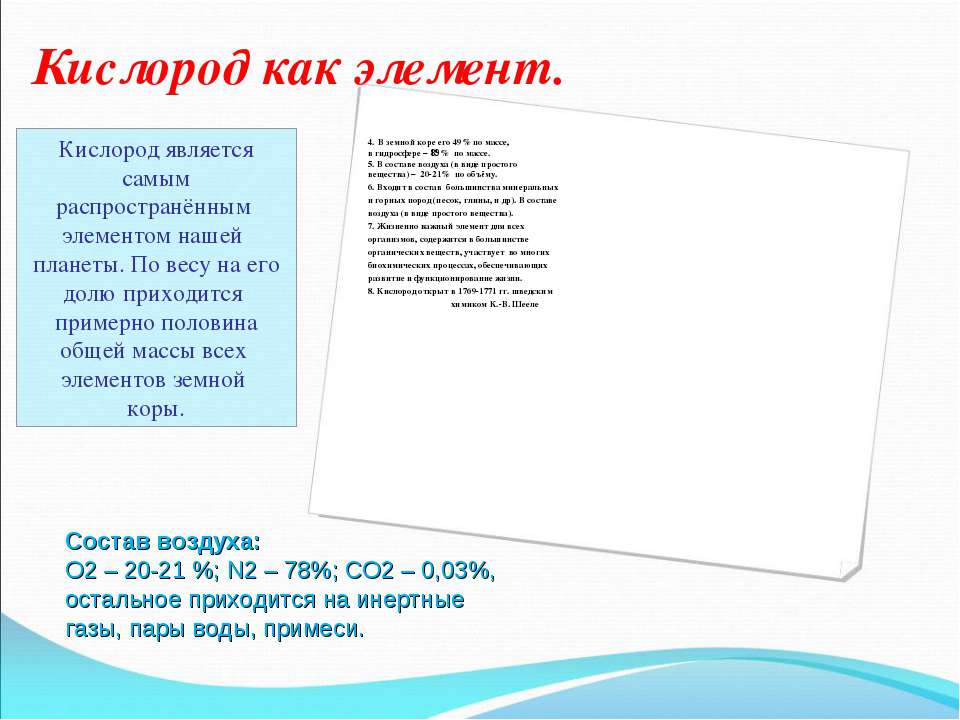
Slide text: Oxygen as an element. Oxygen is the most abundant element on our planet. By weight, it accounts for about half of the total mass of all elements of the earth's crust. Air composition: O2 - 20-21%; N2 - 78%; CO2 - 0.03%, the rest is inert gases, water vapor, impurities. 4. In the earth's crust it is 49% by mass, in the hydrosphere - 89% by mass. 5. In the composition of air (in the form of a simple substance) - 20-21% by volume. 6. Included in most mineral and rocks (sand, clay, etc.). As part of air (in the form of a simple substance). 7. A vital element for all organisms, contained in most organic substances, is involved in many biochemical processes that ensure the development and functioning of life. 8. Oxygen was discovered in 1769-1771. Swedish chemist K.-V. Scheele
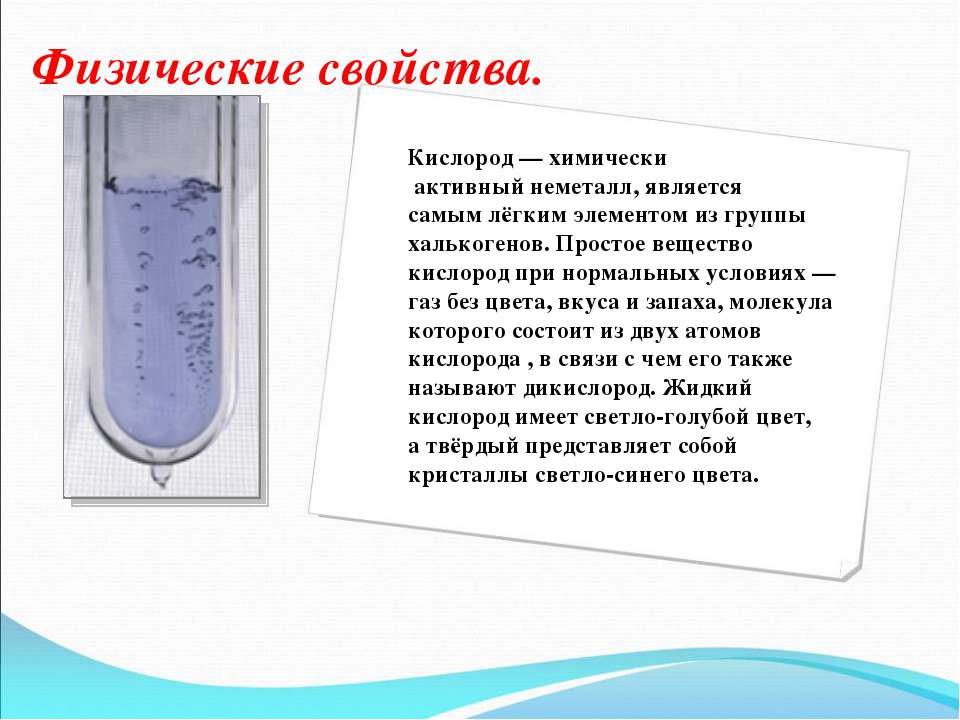
Slide text: Physical properties. Oxygen is a reactive non-metal and is the lightest element of the chalcogen group. A simple substance oxygen under normal conditions is a colorless, tasteless and odorless gas, the molecule of which consists of two oxygen atoms, in connection with which it is also called dioxygen. Liquid oxygen has a light blue color, and solid oxygen is light blue crystals.
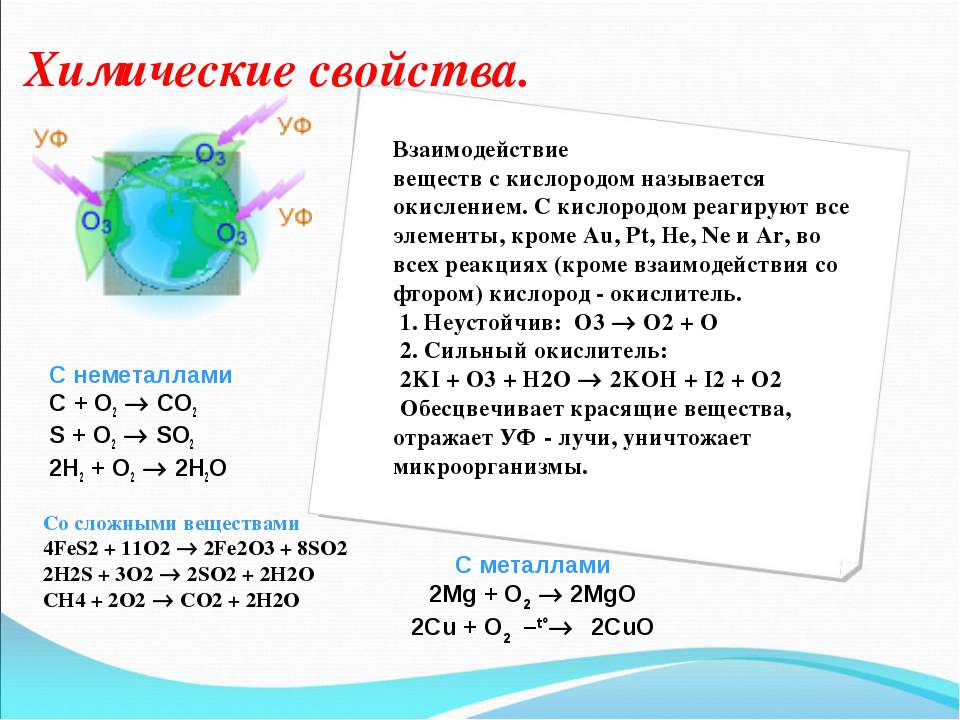
Slide text: Chemical properties. With non-metals C + O2 CO2 S + O2 SO2 2H2 + O2 2H2O With complex substances 4FeS2 + 11O2 2Fe2O3 + 8SO2 2H2S + 3O2 2SO2 + 2H2O CH4 + 2O2 CO2 + 2H2O With metals 2Mg + O2 2MgO 2Cu + O2 –t oxygen is called oxidation. All elements react with oxygen, except for Au, Pt, He, Ne and Ar; in all reactions (except for interaction with fluorine), oxygen is an oxidizing agent. 1. Unstable: O3 O2 + O 2. Strong oxidizing agent: 2KI + O3 + H2O 2KOH + I2 + O2 Discolors dyes, reflects UV rays, destroys microorganisms.
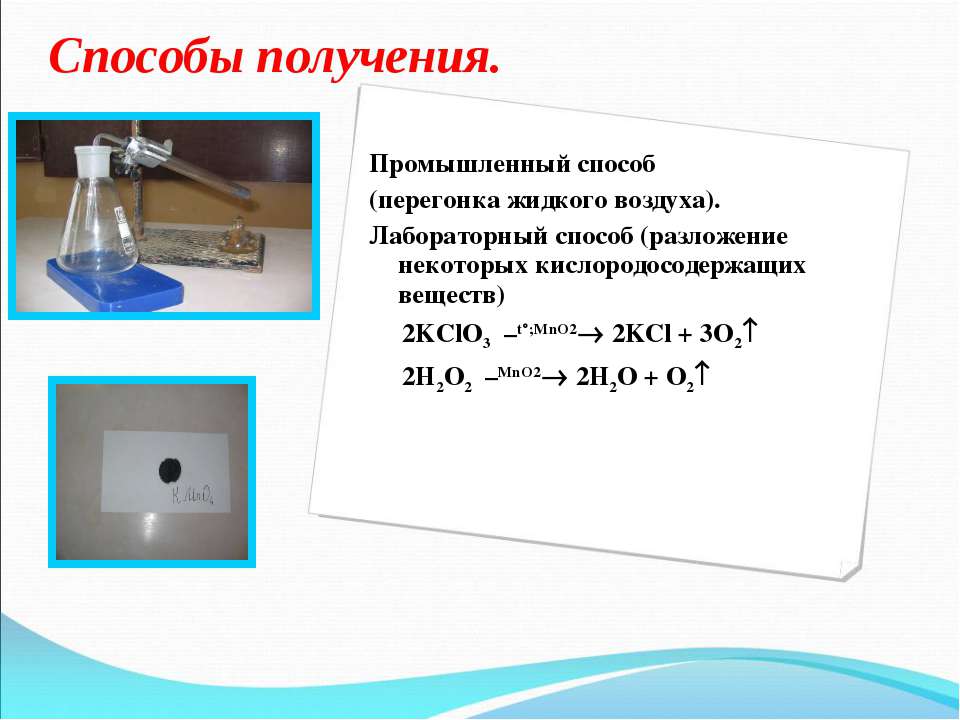
Slide text: Methods of obtaining. Industrial method (distillation of liquid air). Laboratory method (decomposition of some oxygen-containing substances) 2KClO3 –t; MnO2 2KCl + 3O2 2H2O2 –MnO2 2H2O + O2
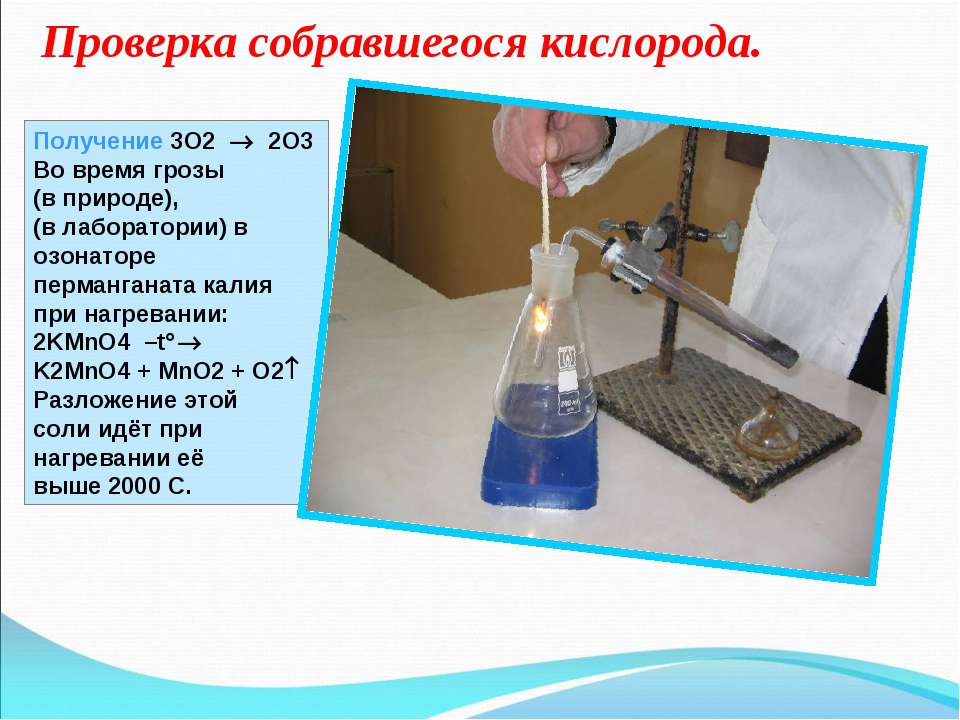
Slide text: Checking the collected oxygen. Obtaining 3O2 2O3 During a thunderstorm (in nature), (in a laboratory) in a potassium permanganate ozonizer when heated: 2KMnO4 –t K2MnO4 + MnO2 + O2 This salt decomposes when it is heated above 2000 C.
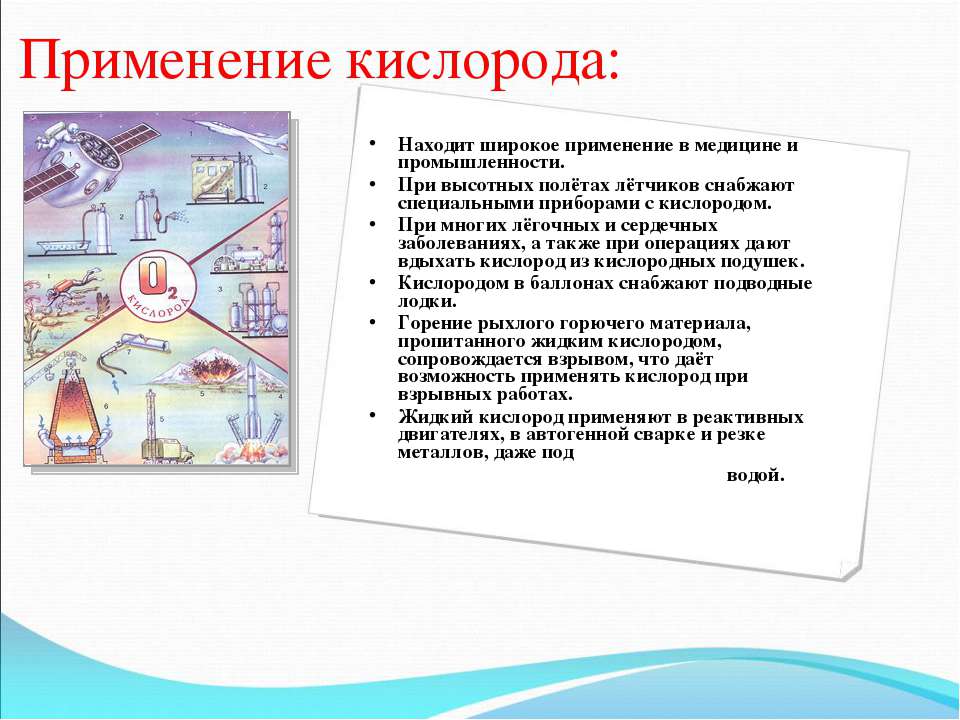
Slide text: Application of oxygen: Widely used in medicine and industry. During high-altitude flights, pilots are supplied with special devices with oxygen. In many lung and heart diseases, as well as during operations, they give oxygen to be inhaled from oxygen bags. Submarines supply oxygen in cylinders. The combustion of loose combustible material impregnated with liquid oxygen is accompanied by an explosion, which makes it possible to use oxygen in blasting. Liquid oxygen is used in jet engines, in autogenous welding and cutting of metals, even under water.
